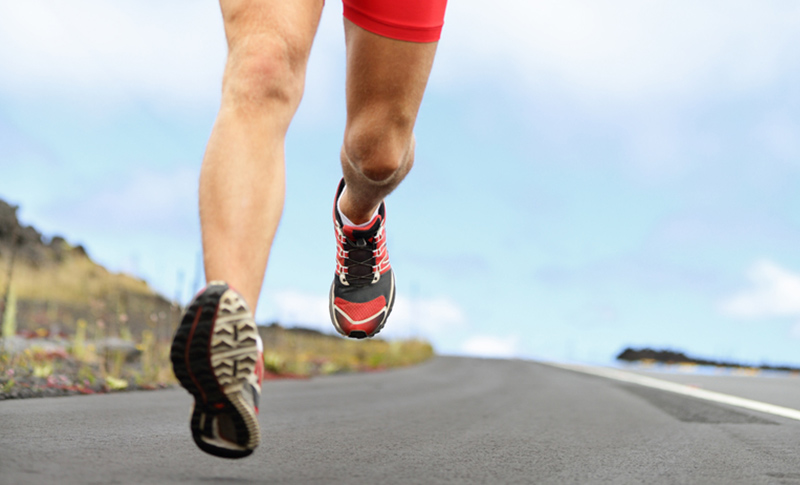What do runners, ballet dancers and military recruits have in common? One trait they all share is a susceptibility to shin splints.
What are shin splints? A shin splint is actually an inflammation of the tendons, muscles and bones surrounding your tibia, or shin bone. Generally, the pain occurs on the inside edge of your shin bone where your muscles attach to the bone. While any vigorous sporting activity can lead to shin splints, most people associate them with running.
Shin Splits Causes
Shin splints are caused when the leg’s muscles and bone tissue are overworked by repetitive physical activity. There are a number of physical reasons that can turn overwork into inflammation:
- Excessive pronation of the foot;
- Increase in strain on a muscle;
- Overstriding;
- Local fatigue of the surrounding structures, decreasing their ability to absorb shock and transferring it to the shin bone;
- Inflexible calf muscles, lessening ankle flexibility;
- Increasing intensity in training.
People who have flat feet or unusually rigid arches are susceptible to shin splints. In addition, running in worn-out shoes can bring on this unwanted inflammation.
Discuss your symptoms with your doctor. He or she may want to conduct some tests to rule out other shin problems, such as stress fractures and tendinitis.
Shin Splits Treatment

Unfortunately, the treatment for shin splint requires rest from the activity that caused the inflammation – and that means no running for a while. Recovery can take three to six months.
For anyone working toward a goal, it can be frustrating, but you can substitute other aerobic activity such as swimming or using a stationary bike, to maintain your fitness while you recover. A physiotherapist can help prescribe a course of exercises that will keep you in shape without aggravating your injury.
You shouldn’t return to the activity that caused your shin splint until you are pain free for two weeks.
In the meantime, you should find these aids helpful in treating shin splints:
- Flexibility exercises: Your physiotherapist can assist you in choosing exercises to stretch your lower legs and ease some of the pain.
- Range of motion exercises: By exercising your ankles, knees, feet and hips, you can relieve pain, reduce inflammation and improve circulation, which aids healing. Ask your physiotherapist to suggest a course of exercise.
- Ice: Apply ice packs to your shins for 20 minutes at a time a few times a day.
- Compression: If you have swelling, a compression bandage may help keep it under control.
- NSAIDs: Non-steroidal anti-inflammatory drugs such as ibuprofen or Aspirin help reduce pain.
How to Prevent Shin Splints

In addition to the discomfort they cause, shin splints put a cramp on your training schedule. If you’re preparing for a big race, there’s nothing more frustrating than delays or obstacles that could keep you from meeting your goal. With that in mind, here are some helpful hints on how to prevent shin splints:
- Slow and steady. As you train, build up to longer distances gradually. Don’t expect to run five kilometres one week and be ready to do 10 the next.
- Mix it up. Don’t make running your only activity, given the strain it puts on your joints. Combine it with other activities, such as swimming, cycling or rowing, that give you the same cardiovascular boost without the joint stress.
- Short and sweet. A short stride length is better for your body and helps prevent shin splint. It also helps you increase speed, since quicker leg turnover leads to speed. Two benefits for the price of one!
- Make it the middle. Landing flat on the middle of your foot prevents stress and injury. If you run on your toes, your calf muscles may become strained, while striking the ground heel first stretches your shin muscles.
- Shoe cues. Give your feet the extra support they need by selecting neutral shoes or those that are designed for stability or motion control. Ask your physiotherapist for a gait analysis. If you are striking with your heel or overpronating (turning your foot outward), orthotics in your shoes may help keep you aligned properly by providing arch support. It’s an inexpensive way to keep other conditions, such as plantar fasciitis, at bay, too. In addition, make sure to replace your shoes every 500 kilometres. Worn out shoes are a major cause of shin splints, since the wear and tear erodes their support.
Prevent shin splints, but if you can’t avoid them, follow the proper course of treatment so you don’t do yourself permanent harm.
